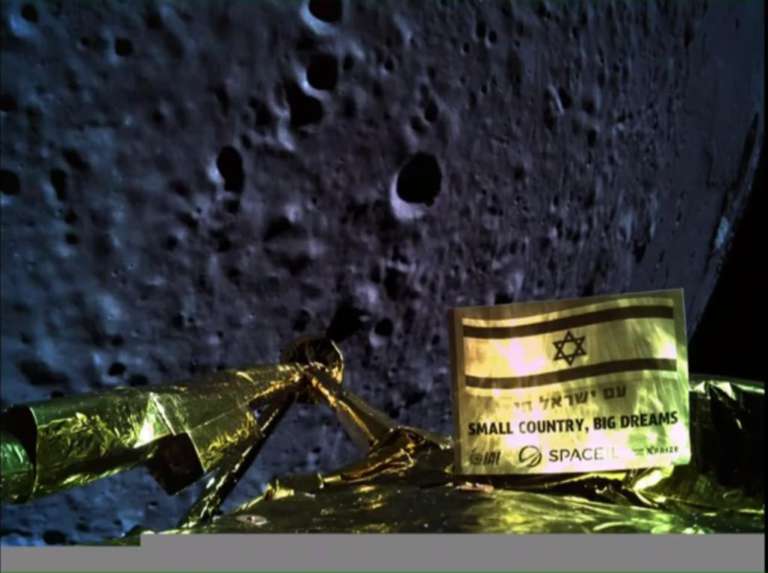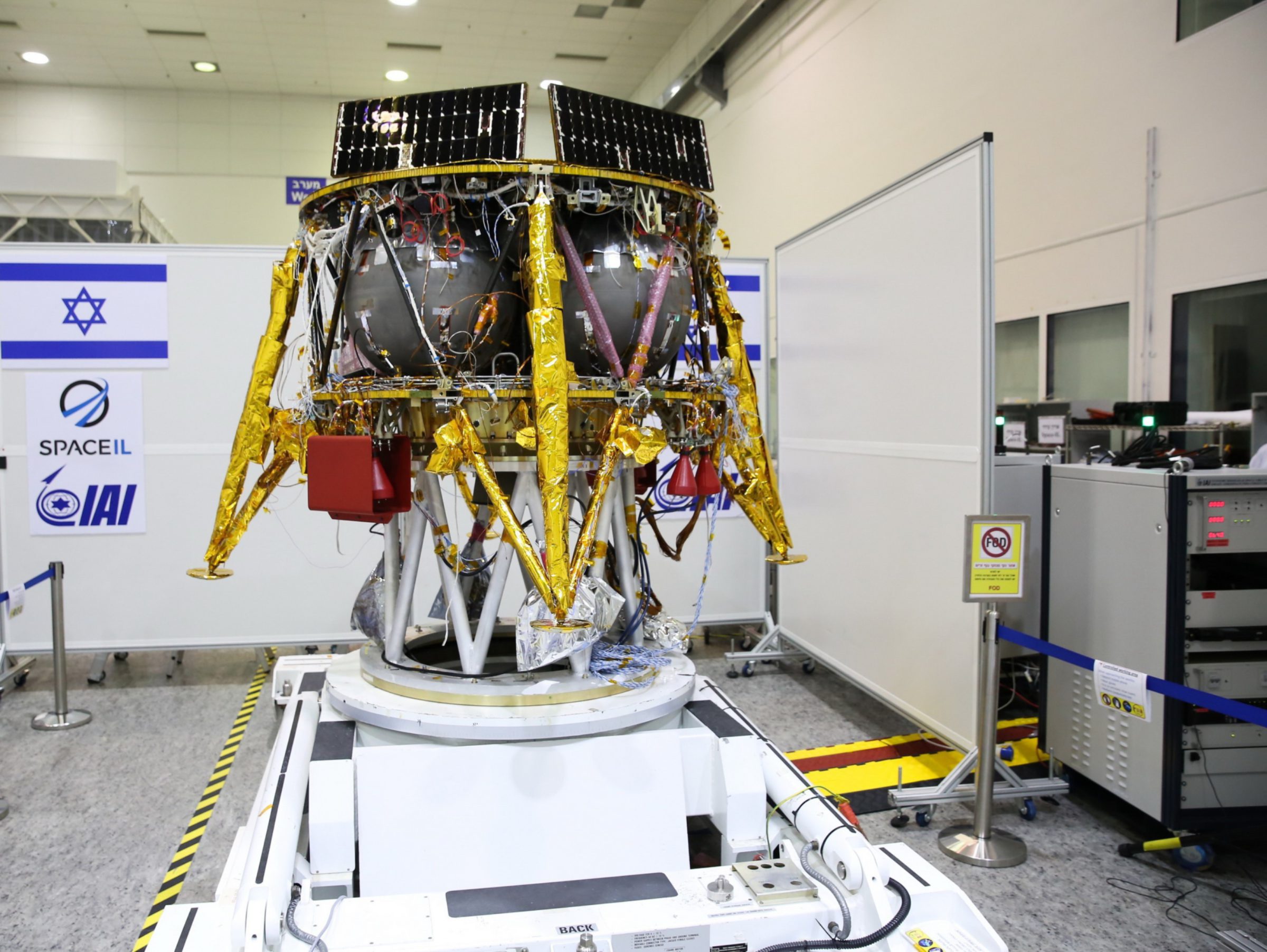Beresheet1 was a private mission to the Moon by Israeli non-profit SpaceIL. Built to win the now-defunct $20 million Google Lunar XPrize, Beresheet1 was meant to inspire more Israelis to pursue STEM careers. The name Beresheet (Hebrew: בראשית) means "in the beginning." Beresheet1 successfully reached the Moon, but crash-landed on April 11, 2019.
In addition to providing high-resolution imagery from the surface,
Beresheet1 would have measured the magnetic field at its landing site in
Mare Serenitatis, which has magnetic anomalies detected by Kaguya, Lunar
Prospector, and the Luna 21 mission. Understanding the Moon's magnetism
teaches us about its history. While Earth has a global magnetic field
caused by the continued churning of liquid metal near the core, the Moon
does not. But 3.6 billion years ago, the Moon had a magnetic field just
as strong as Earth's. When new-forming rocks solidify from their melted states, they lock
in traces of the ambient magnetic field at the time. By looking at the
ages of different regions and the strength of the magnetic field
embedded in rocks, scientists can piece together the Moon’s history.
In late 2020 SpaceIL announced a plan for Beresheet2 to launch in 2024. The mission will include two landers and one orbiter, and children, students, and scientists around the world will be able to communicate with the orbiter and perform experiments. The mission, which has since been delayed to 2025 and is facing funding uncertainties, will build on lessons learned from Beresheet1.

Beresheet1 instruments and tools
Imaging system: Beresheet1's camera system consisted of six color (RGB), 8-megapixel, Imperx Bobcat B3320C cameras with Ruda optics. They had 60-by-80-degree field of views and resolutions of 2488 by 3312 pixels. Five were positioned along the circumference of the spacecraft’s circular deck to create a full panorama after landing, and one “selfie” camera with a shorter focal length looked inward toward a plaque with the Israeli flag on the deck. Sources: SpaceIL news brief, communications with SpaceIL engineers
Magnetometer: Used to measure the Moon's magnetic field during descent and after landing. Mission Scientist: Oded Aharonson. Weizmann Institute of Science feature | Aharonson et. al (2019)
Retroreflector: A NASA Goddard Space Flight Center-provided array of mirrors to reflect laser signals from spacecraft in lunar orbit. NASA hopes a network of similar reflectors could be used to build a navigation network for orbiting spacecraft. NASA news release | Hardware image
Academic resources
- Aharonson, O., Russell, C. T., Head, J. W., Wieczorek, M., Garrick-Bethell, I., Weiss, B. P., Smith, D. E., Rowe, K., Grosz, A., Amrusi, S., Novoselsky, A., Nahaman, N., Grossman, Y., Shimoni, Y., & Gomez, A. (2020). The science mission of Spaceil’s Beresheet Lander. Planetary and Space Science, 194, 105115.
Action Center
Whether it's advocating, teaching, inspiring, or learning, you can do something for space, right now. Let's get to work.


 Explore Worlds
Explore Worlds Find Life
Find Life Defend Earth
Defend Earth



